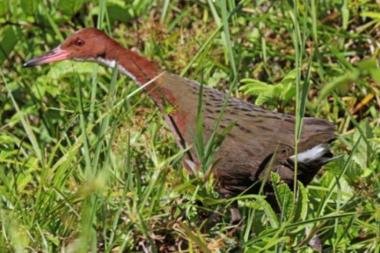
Iterative evolution happens when the same or similar structures evolve out of the same common ancestor, but at different times – meaning that the animal actually comes about twice over, completely separately.
A chicken-sized bird species that went extinct 136,000 years ago made a comeback to the earth twice due to a rare evolutionary process, scientists say. Researchers found the last surviving flightless species of bird, a type of rail, in the Indian Ocean came back through a process called “iterative evolution”, which saw it emerge twice over, according to The Independent.

Researchers from the University of Portsmouth in the UK and Natural History Museum found that on two occasions, separated by tens of thousands of years, the species was able to successfully colonise an isolated atoll called Aldabra and subsequently became flightless on both occasions.
“Iterative evolution happens when the same or similar structures evolve out of the same common ancestor, but at different times – meaning that the animal actually comes about twice over, completely separately,” according to the report. “This is the first time it has been seen in rails, and one of the most significant ever seen in a bird of any kind.”
The last surviving colony of flightless rails is still found on the island today, according to the study published in the Zoological Journal of the Linnean Society. The white-throated rail is a chicken-sized bird, indigenous to Madagascar in the south-western Indian Ocean. They are persistent colonisers of isolated islands, who would have frequent population explosions and migrate in great numbers from Madagascar. Many of those that went north or south drowned in the expanse of ocean and those that went west landed in Africa, where predators ate them.
Of those that went east, some landed on the many ocean islands such as Mauritius, Reunion and Aldabra, the last-named is a ring-shaped coral atoll that formed around 400,000 years ago. With the absence of predators on the atoll, and just like the Dodo of Mauritius, the rails evolved so that they lost the ability to fly. However, Aldabra disappeared when it was completely covered by the sea during a major inundation event around 136,000 years ago, wiping out all fauna and flora including the flightless rail.
The researchers studied fossil evidence from 100,000 years ago when the sea-levels fell during the subsequent ice age and the atoll was recolonised by flightless rails. They compared the bones of a fossilised rail from before the inundation event with bones from a rail after the inundation event. The researchers found that the wing bone showed an advanced state of flightlessness and the ankle bones showed distinct properties that it was evolving towards flightlessness.
This means that one species from Madagascar gave rise to two different species of flightless rail on Aldabra in the space of a few thousand years.
“These unique fossils provide irrefutable evidence that a member of the rail family colonised the atoll, most likely from Madagascar, and became flightless independently on each occasion,” said Julian Hume from the Natural History Museum.
“Fossil evidence presented here is unique for rails, and epitomizes the ability of these birds to successfully colonise isolated islands and evolve flightlessness on multiple occasions,” Hume said.